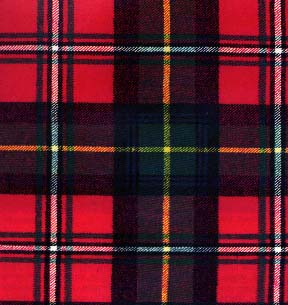The Boyd Family Tartan

The pattern shown above is the clan tartan of the Boyd Family. Although not among the best known of the Scottish tartans, the Boyd tartan is widely acclaimed for its charm and unusual beauty.
The name Boyd is believed to derive from Boid, the genitive of Bod, which is the Gaelic name for Bute, the second largest island in the Firth of Clyde. The Boyd family dates back at least to 1205, when historical records show that Dominus Robertus de Boyd witnessed a legal contract. An early patriot of the clan was Duncan Boyd, who was hanged in 1306 for aiding Robert the Bruce.
The Boyd family came to political prominence during the mid-fifteenth century. Robert, the eldest son of Sir Thomas Boyd of Kilmarnock, was named Lord Boyd by King James II of Scotland. James II was killed by a cannon explosion in 1460, leaving his nine-year old son to succeed him as James III. Lord Boyd was named Protector of James III and eventually was named Regent of Scotland. However, political fortunes turned against him, and in 1469 was tried and sentenced to death for treason for having earlier kidnapped James III in an episode associated with his rise to power. Lord Boyd fled to England, leaving his younger brother Alexander to be hanged in his stead.
The Boyd clan has thrived to the present day. Currently, the ceremonial head of the Boyd clan is the Seventh Lord Kilmarnock.
Bibliography
Ian Grimble, Scottish Clans and Tartans, Lomond, London, 1993
J. D. Mackie, A History of Scotland, Penguin, London, 1964
Notes by R. W. Boyd, December, 1995
<--Back to Boyd Page

